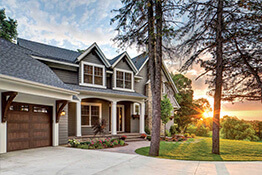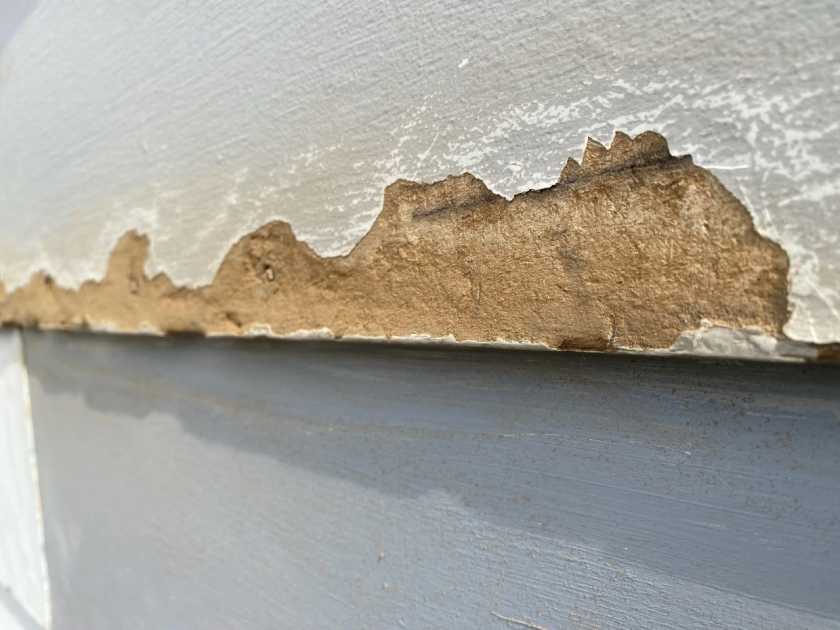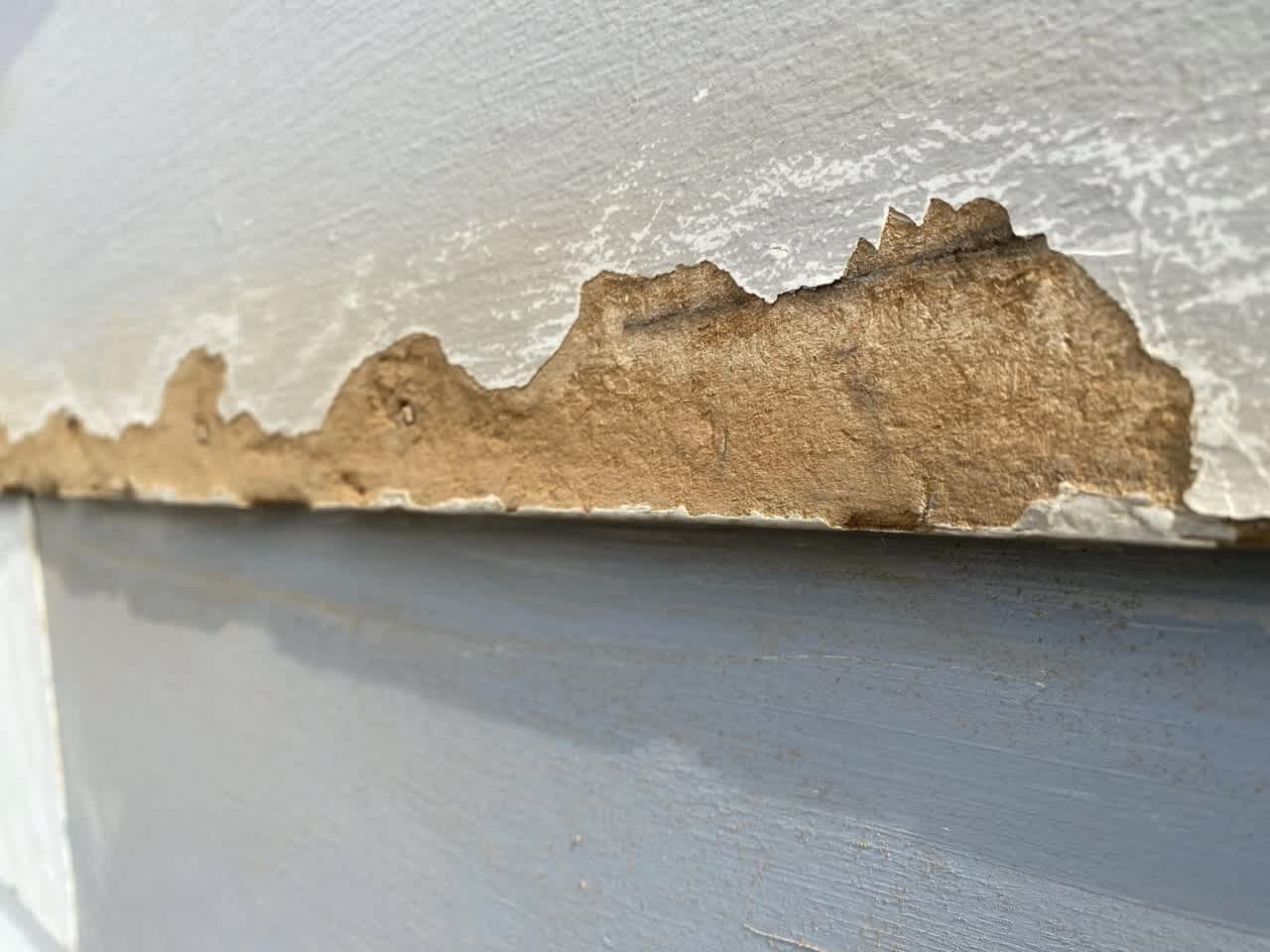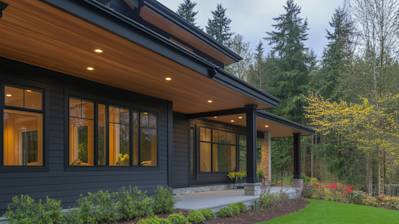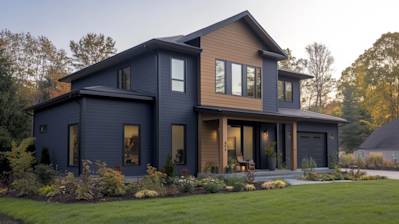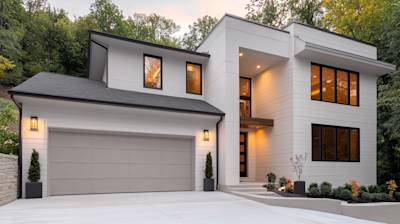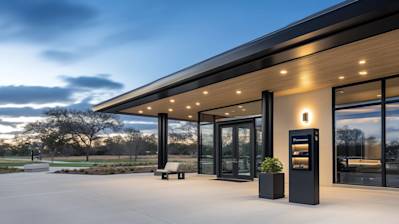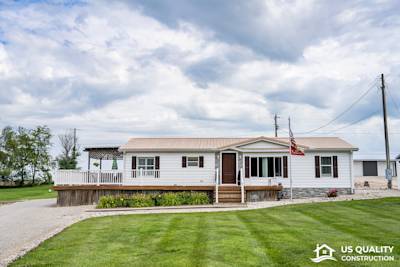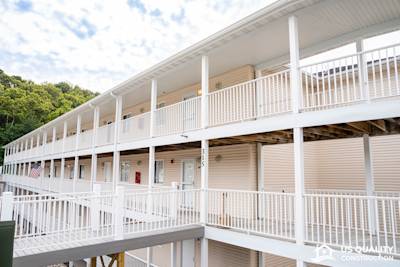Considering upgrading your home's exterior with masonite siding? While masonite siding offers many benefits, it's essential to understand some of the common issues associated with this material. In this detailed guide, we'll explore these issues, their causes, and how to address them effectively.
What is Masonite Siding?
Extensively used across the United States, masonite siding, also known as hardboard siding, is made from wood fibers, wax, and resin, which are combined under high pressure and heated conditions to create a robust, waterproof material. It provides a wood-like appearance without the disadvantages associated with real wood, such as susceptibility to pests and decay. Masonite siding owes its name to its inventor, William H. Mason, who developed the innovative material in the early 1920s as a more economical alternative to solid wood.
Common Masonite Siding Problems and Thier Solutions:
1. Moisture Damage
One of the most significant concerns with masonite siding is its susceptibility to moisture damage. If not properly sealed and maintained, masonite siding can absorb water, leading to swelling, warping, and ultimately, structural damage.
Cause:
Moisture damage typically occurs due to improper installation, lack of adequate sealing, or exposure to extreme weather conditions.
Solution:
To mitigate moisture damage, ensure proper installation by experienced professionals. Regularly inspect your siding for signs of water infiltration and promptly address any issues. Additionally, consider applying a high-quality sealant to protect your masonite siding from moisture.
2. Rot and Decay
Like natural wood, masonite siding is prone to rot and decay if exposed to prolonged moisture. This can compromise the structural integrity of your siding and necessitate costly repairs or replacement.
Cause:
Rot and decay occur when moisture infiltrates the siding and provides an ideal environment for fungal growth, leading to deterioration over time.
Solution:
Prevent rot and decay by maintaining proper drainage around your home, promptly repairing any damaged areas, and regularly inspecting your siding for signs of deterioration. Consider treating your masonite siding with a fungicidal solution to inhibit fungal growth.
3. Cracking and Splitting
Another common issue with masonite siding is cracking and splitting, which can detract from its appearance and compromise its functionality.
Cause:
Cracking and splitting often occur due to fluctuations in temperature, prolonged exposure to sunlight, or physical impact.
Solution:
To prevent cracking and splitting, choose high-quality masonite siding with proper density and thickness. Additionally, apply a durable paint or finish to protect your siding from UV radiation and temperature extremes. Regular maintenance, including caulking and sealing, can also help prevent these issues.
4. Termite Infestation
While masonite siding is not as susceptible to termites as natural wood, it can still attract these destructive pests if not adequately protected.
Cause:
Termite infestations often occur when masonite siding comes into contact with soil or when moisture damage creates favorable conditions for termite activity.
Solution:
Prevent termite infestations by maintaining a clear perimeter around your home, minimizing soil contact with your siding, and promptly addressing any moisture issues. Consider applying a termite-resistant treatment to your masonite siding for added protection.
Why Masonite Siding was Discontinued
Masonite siding, once a popular choice for homeowners seeking an affordable and wood-like alternative to traditional siding materials, ultimately faced discontinuation due to several key factors:
1. Susceptibility to Moisture Damage:
One of the primary reasons for masonite siding's discontinuation was its vulnerability to moisture damage. Despite efforts to seal and protect the material, masonite siding could absorb water, leading to swelling, warping, and ultimately, structural deterioration. This susceptibility to moisture-related issues made it a less attractive option for homeowners seeking low-maintenance siding solutions.
2. High Maintenance Requirements:
Compared to other siding materials on the market, masonite siding required relatively high maintenance to preserve its appearance and structural integrity. Regular painting, sealing, and ongoing inspections were necessary to prevent moisture infiltration and address any signs of damage promptly. For many homeowners, the ongoing maintenance demands of masonite siding became burdensome over time.
3. Environmental Concerns:
The manufacturing process of masonite siding raised environmental concerns due to the use of synthetic resins and other chemicals. As awareness of environmental issues grew, homeowners and industry professionals alike became more conscious of the ecological impact of construction materials. The environmental considerations associated with masonite siding further contributed to its decline in popularity.
4. Availability of Alternative Materials:
As advancements were made in siding technology, more durable and low-maintenance alternatives to masonite siding became readily available. Materials such as vinyl, fiber cement, and engineered wood siding offered superior resistance to moisture damage, longevity, and ease of maintenance, making them preferred choices for many homeowners. The availability of these alternative materials further diminished the demand for masonite siding in the market.
While masonite siding once offered a cost-effective and aesthetically pleasing option for homeowners, its discontinuation can be attributed to its susceptibility to moisture damage, high maintenance requirements, environmental concerns, and the availability of superior alternative materials. While existing homes with masonite siding may still require maintenance and repairs, the material is no longer widely used in new construction or renovation projects.
Features of Masonite Siding
Appearance
Masonite siding is known for its versatility when it comes to appearance. It can mimic the look of natural wood grains, making it an attractive and affordable alternative to real wood siding. It's available in a variety of styles, such as lap boards, shingles, or panels, and can be painted in any color to match your aesthetic preferences.
Durability
Masonite siding is designed to withstand harsh environmental conditions and resist water penetration. While not as long-lasting as some of the other alternatives, like vinyl or fiber cement siding, with proper maintenance and care, masonite siding can last up to 20-30 years.
How does Masonite Siding compare to other siding materials?
Masonite siding stands out for its affordability, aesthetic appeal, and relatively strong durability. However, when compared to materials like vinyl siding and fiber cement siding, there are factors to keep in mind:
- Vinyl Siding: Although less expensive than masonite siding, vinyl can't match masonite's wood-like appearance. It also doesn't offer the same flexibility when it comes to painting and staining.
- Fiber Cement Siding: Fiber cement is incredibly durable and resistant to rot and pests, but it's heavier and requires more specialized installation than masonite. It also tends to be more costly.
How to maintain your Masonite Siding
Maintaining masonite siding requires diligence but isn't overly complex. It mostly involves regular inspection, timely repairs, correct painting, and adequate water drainage:
Regular Inspection
Checking your masonite siding for signs of damage or excessive wear is key to prolonging its lifespan. Look for cracks, bubbles, and other deformities at least twice a year.
Timely Repairs
If you notice any damage during your inspections, address it promptly to prevent the problem from worsening. Depending on the severity, repairs may involve replacing individual boards or resealing the affected areas.
Correct Painting
Using the correct type of primer and paint on masonite siding can significantly enhance its weather resistance. Also, consider repainting every 5-6 years to maintain the siding's appearance and protective finish.
Adequate Water Drainage
Ensuring your home has a properly functioning gutter system reduces the risk of water damage on your siding. Also, consider installing a splash block at the downspout's end to direct drainage away from your house.
When it's time to consider your home siding options, Masonite siding can certainly hold its own against more advertised materials. Its mix of affordability, aesthetic versatility, and durability make it an attractive option for those homeowners willing to invest a bit of time into proper maintenance. As always, consider your home's location, your budget, and your personal style before making a final decision.
Frequently Asked Questions about Masonite Siding
What is the history of Masonite siding?
Masonite siding, also known as hardboard siding, first appeared in the early 1900s, invented by William H. Mason. It gained popularity due to its durability and ease of installation. Over time, however, its vulnerability to moisture damage led many homeowners to seek alternatives.
What's it made from?
Masonite siding is a type of composite wood material. It's made from wood fibers, wax, and resins compressed into a board under high temperature and pressure, creating a wood-like but much stronger material.
What designs and colors does it come in?
Masonite siding comes in a variety of textures, shapes, and colors. Common designs mimic traditional wood siding styles like shiplap, clapboard, and cedar shakes. As for colors, manufacturers leave many panels primed but unpainted, so you can choose a custom color to match your home's exterior.
How is Masonite siding installed?
The process starts with removing old siding if necessary and preparing the wall surface. Masonite siding panels are then attached to the home’s exterior using nails or screws, starting from the bottom and working upwards. It is highly recommended that professional installers handle this work, as improper installation can lead to moisture damage and other problems.
What kind of maintenance does Masonite siding require?
Masonite siding requires regular painting and sealing to protect it from moisture absorption. Maintenance includes frequent inspections for any signs of damage, especially after bad weather. Minor repairs might involve patching small holes or replacing damaged boards.
Can Masonite siding be repainted?
Yes, Masonite siding can be repainted, and it's often necessary due to its susceptibility to weather. Proper repainting involves cleaning the surface, applying primer, and then using an exterior-grade paint. You should also ensure any cracks or gaps are properly sealed before painting to prevent water infiltration.
Is it possible to pressure wash Masonite siding?
While pressure washing is possible, it should be done with caution. High-pressure washing can damage the siding or force water into small cracks, which could result in swelling or warping. If you choose to pressure wash, use a low setting and aim the sprayer at a downward angle to minimize potential moisture damage.
What do I do if my Masonite siding has damage?
If you notice damage to your Masonite siding, it's important to address it quickly. Small holes or cracks can be filled and sealed, but for larger areas of damage, the affected boards may need to be replaced. If damage is extensive, it might be time to consider replacing your Masonite siding completely.
What are the alternatives to Masonite siding?
If you're considering replacing Masonite siding, common alternatives are vinyl, fiber cement, and traditional wood siding. Each has its own advantages and disadvantages, and the best choice ultimately depends on your specific needs and budget.
Conclusion
While masonite siding offers many benefits, including affordability and aesthetic versatility, it's essential to be aware of the common issues associated with this material. By understanding the causes of these issues and implementing proactive maintenance measures, you can protect your masonite siding and ensure its longevity.
Whether you're renovating your home or building new, masonite siding can be a durable and attractive choice with proper care and maintenance. If you're considering masonite siding for your home, consult with experienced professionals to ensure proper installation and long-term protection against common issues.
About US Quality Construction
Welcome to US Quality Construction of Kansas City, MO! With years of experience in the construction industry, we specialize in providing top-notch services for residential and commercial projects alike. Our dedicated team is committed to delivering exceptional quality and customer satisfaction on every job. Contact us today to learn more about how we can meet your construction needs.
Tags: masonite siding, benefits, home improvement,
